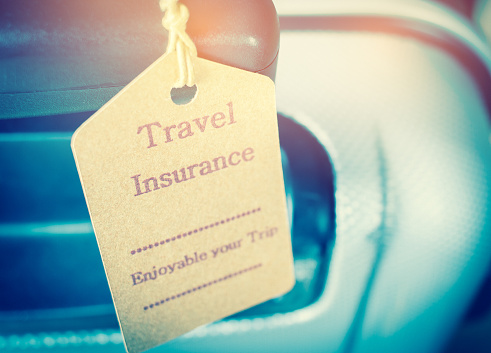
Yes, you will need a converter while in Iceland.The voltage requirements are 220 volts.

Yes. Please call our office with group travel inquiries. We will assist you in booking the best price for your group. Group leaders receive travel benefits. Call at 1-866-475-7023.

Each supplier offers travel insurance with their itineraries. We also offer separate coverage through outside companies offering a broad range of protection for situations such as medical emergencies, weather, luggage loss or delays, and other coverage. Both options will be discussed with you prior to booking to see which would provide the best coverage, at the best price.
Click here to begin pricing out Travel Insurance

To check availability & pricing, simply call 1-800-942-3301. Agents are available from Monday - Friday from 9 a.m. to 8 p.m. (Eastern Standard Time) Saturdays from 10 a.m. to 3 p.m. year round, and Sundays from 12 p.m. to 4 p.m. January through May. If you prefer, you can email your request to [email protected].

The currency in Iceland is the Icelandic Krona. Sometimes you can convert money at your local bank but if not there will be kiosk at most abroad airports.

Iceland is Greenwich Mean Time and 4 hours ahead of eastern time.

Whether traveling to Iceland on business or for adventure, it's important to pack a warm jacket during winter, and a wind-resistant fleece, even during summer, as the wind sometimes blows from the north and can pack a chill.
For outdoor enthusiasts, or anyone planning on hiking or camping, take waterproof pants and a rain jacket. A light sweater in the summer and heavy sweater during winter are a must. You can leave the shorts behind. Although there are rare warm summer days, pants block the wind. For sightseeing, sturdy boots keep your feet dry during bad weather. Because Iceland is considered part of Scandinavia, a black shirt and casual slacks will get you into any business meeting or nightclub. Think European chic. Many locals, however, dress down on the weekends.

Iceland has no shortage of things to do and see. Unfortunately many tourists tend to stay close to the countryâ??s capital even though there are a lot of activities available all throughout Iceland. Many of these places are free or very inexpensive and offer amazing exploration opportunities.
One of the more popular activities in Iceland is hiking. If you do want to explore the areaâ??s lava rocks and foliage, make sure that you wear hiking boots to protect your feet and ankles as the terrain can be a little rough. Donâ??t forget to pack a backpack that is filled with not only food items, but raingear, extra clothes and sunscreen. Icelandâ??s weather is changing constantly so even if itâ??s sunny when you set out on a hike, 30 minutes later it could be stormy.
You really canâ??t go to Iceland without seeing some of the ice. Why not take this opportunity to explore a glacier or do some ice climbing. The best place for tourists to do so is Skaftafell.
Another popular excursion for tourists is whitewater rafting. One of the more popular places to go is in northern Iceland on Austrari Jokulsa or Vestari or in southern Iceland on the Hyita River.
Vatnaj�¶kull National Park is filled with sites that hold titles in Iceland. The national park is not only the newest national park, but the largest one. The countryâ??s largest glacier, Vatnaj�¶kull, is located at the park as well as Europeâ??s largest waterfall in the amount of water that is discharged in volume, Dettifoss and Icelandâ??s highest mountain called Hvannadalshn�ºkur.
If you have the time you should definitely visit Reykjavik if you happen to be there during the summer. Not only is Ã??ingvellir National Park close by, but there are also quite a few opportunities available to do some whale watching.
For those that would like to experience volcanic craters firsthand M�½vatn is the place to go. This lake has a unique appearance because there are quite a few volcanic craters located throughout the lake. Youâ??ll see lots of waterbirds in the area, including 13 difference species of ducks.
- Snaefellsness Peninsula and Snaefellsjokull Glacier â?? The rugged West coast with its high waves is very dramatic and home to this amazing glacier. The locals like to hike up and ski down â?? no chairlifts here!
- The Golden Circle â?? This scenic route is doable from Reykjavik in a day. It comprises the geothermally active valley of Haukadalur, Gullfoss waterfall and Thingvellier National Park. There is much of importance to see along the way including the reliable â??Strokkurâ? geyser and the great â??Geyserâ? where the name originated. In the park, you can see the original site of the oldest parliament in the world which was founded by the Vikings. Thereâ??s also a site where you can view the Great Atlantic Rift, a rift that is slowly pulling Iceland apart along the North American and European tectonic plates.
- Southern Iceland â?? Here youâ??ll find a lowland region of rich farmlands. In April farmers were getting the sheep and cattle out to fields for the summer. There are also magnificent black sand beaches, striking twisted lava rocks, glaciers, charming villages, and yes, many more photo opportunities! A hike to the top of Skogafoss waterfall presented us with breathtaking scenery and magical moments viewing the nesting fulmars in the misty rainbows. Simply spectacular!

Surprisingly, Iceland's winters aren't as cold as you may think. Sure they do receive ice and snow, but countries like Canada and Russia do generally have colder winters. If you want to visit Iceland then your best time would be during the summer months because it doesn't ever fully get dark in the month of June. This allows for a lot of time to explore. If you do want to go in the winter airfare and accommodations can be lower since it's the off season. However expect to experience at least 20 hours of nighttime. If you want to see the Northern Lights, for the best chance to see them travel in September, October, end of February through mid-March.
